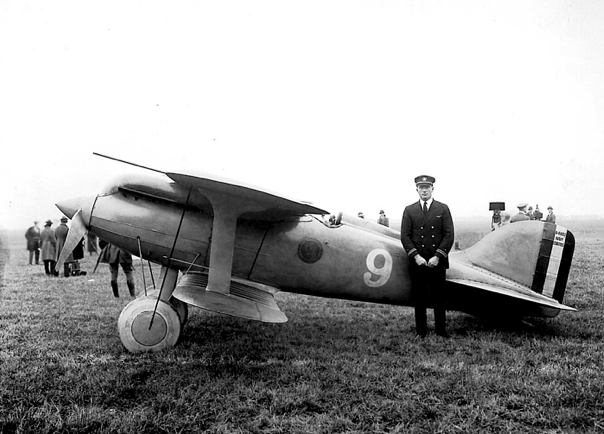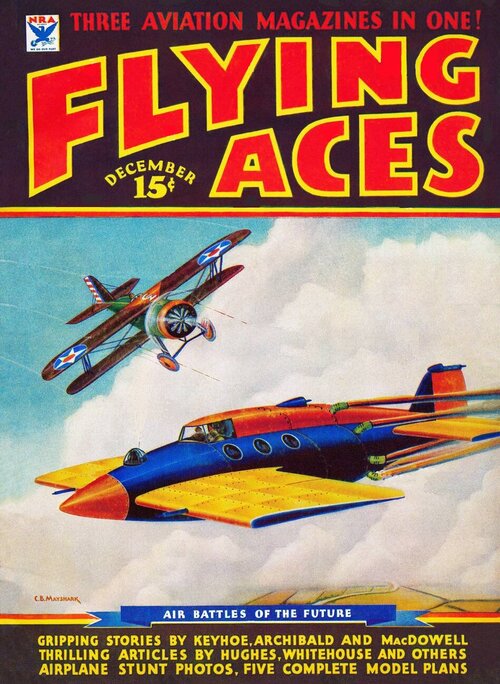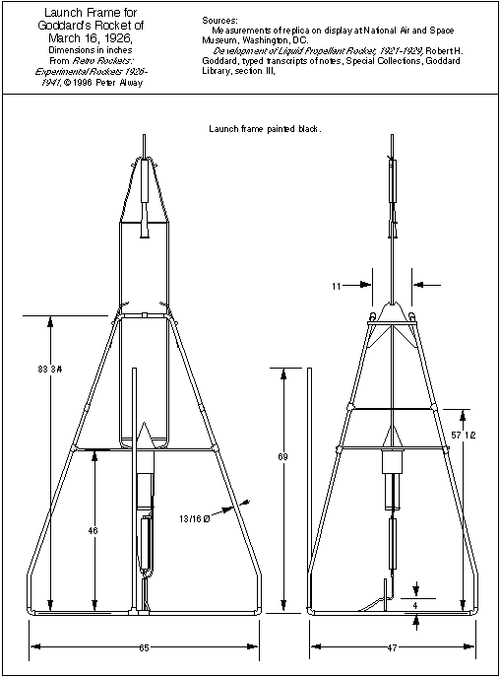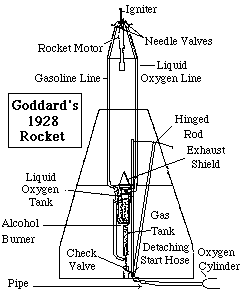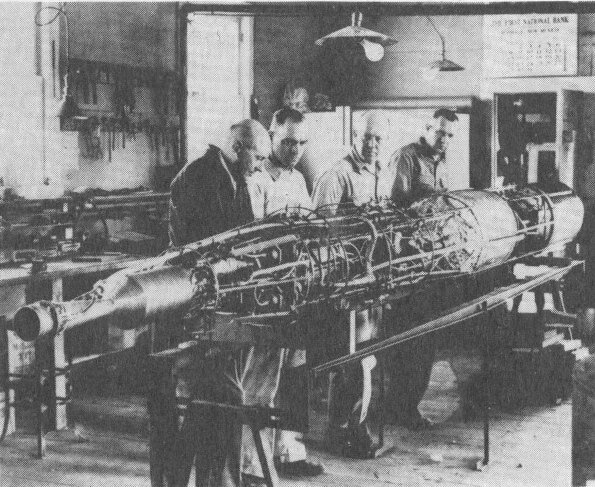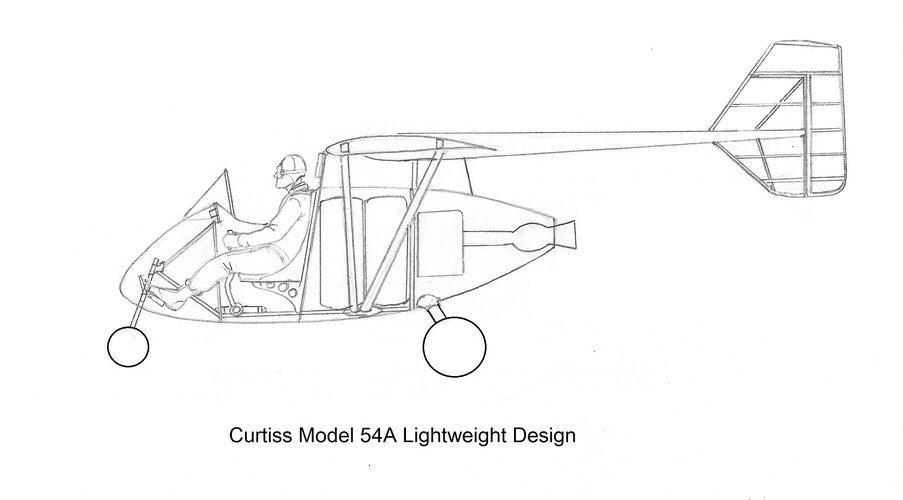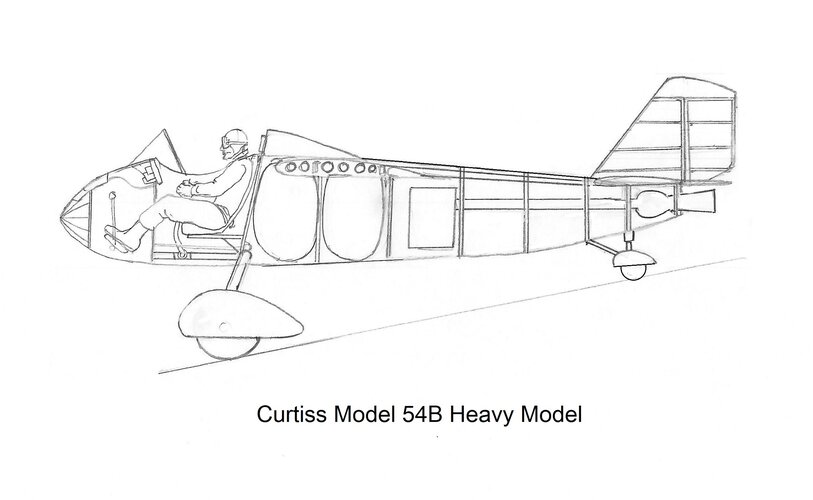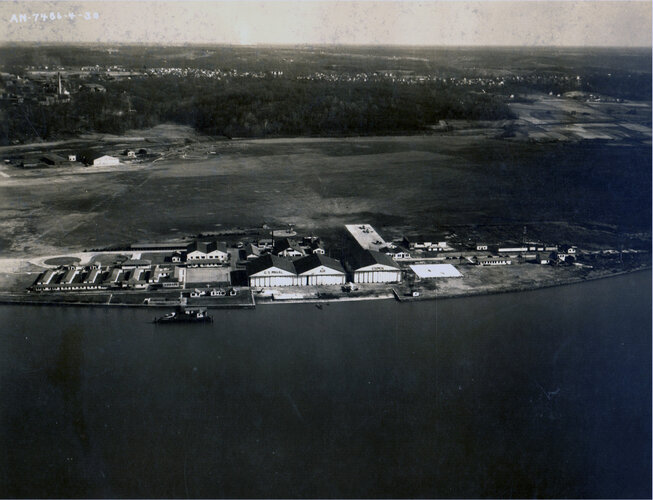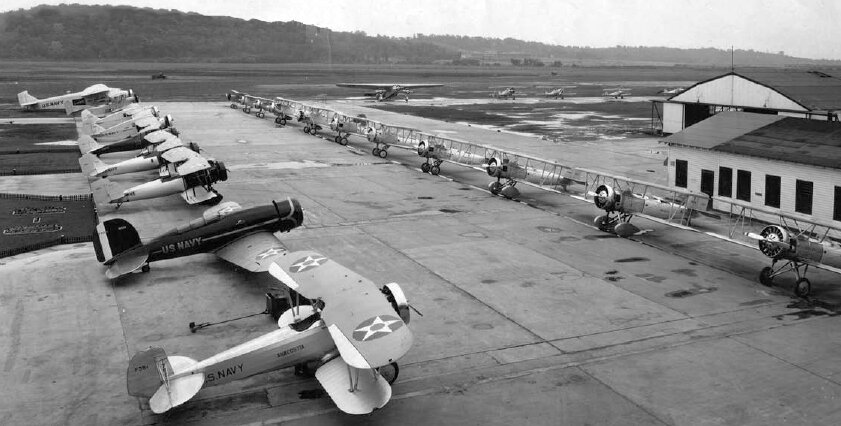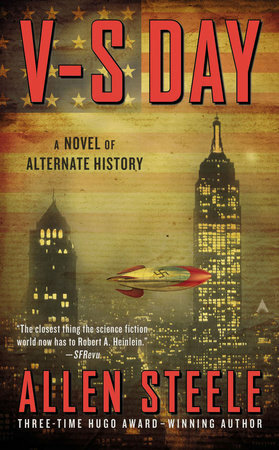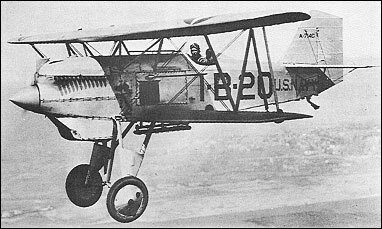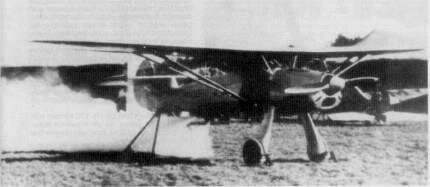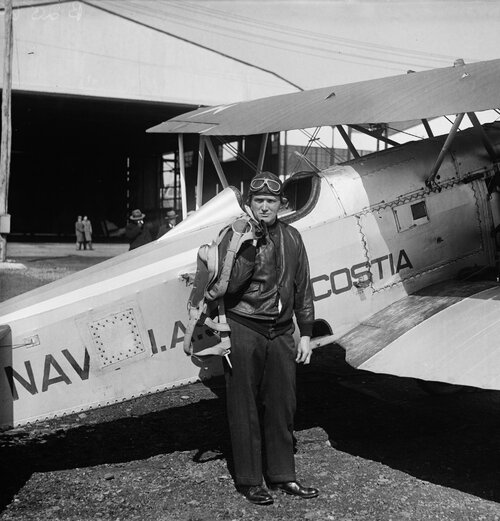- Joined
- 29 July 2009
- Messages
- 1,530
- Reaction score
- 1,552
This is an alternative history of Goddard's historical liquid rocket launch of 1926 and the succeeding development of a fictional experimental rocket airplane based on Goddard's designs. The advent of the design and its governmental support ultimately leads to a change in the course of the US rocket industry.
Alternate History...
Like Charles Lindbergh, who read of Goddard's research and his latest launch of July 1929 in a New York Times article, experimenters at the US Navy's Engineering Experimental Station at Annapolis also read the article and saw the benefit of using rocket propulsion for new aircraft designs and long range weaponry. Goddard was contacted by both Lindbergh and the Navy to discuss the potential of the liquid rocket and its application to military systems.
The US Navy was operating the USS Langley, Lexington, and Saratoga aircraft carriers with squadrons of biplane fighters, which were growing in capability, but were relatively slow and whose armament was approximately 200 lbs of bombs. The Navy saw the rocket as a means of generating greater thrust, which would yield greater lift to carry more bombs. It would also result in the ability to close the vast distance between the carriers and their targets in minimal time. The promise of the rocket was great, but the development hurdles looked more like the walls of Jericho.
Their meeting of August 1929 planted the seed for the development of a rocket airplane. After having gathered magazine, newspaper, and journal articles of world-wide rocket developments, and having examined Pathe film of Fritz von Opel's rocket car and airplane in Germany, Goddard modifies his rocket patent of 1929 and designs a rocket system that could be fitted to an aircraft. (Goddard's rocket airplane patent can be found in the thread below).
Discussions over the type of aircraft that could carry Goddard's rocket, fuel, and it's associated equipment led to the group's compilation of a short list of available airframe manufacturers that had the engineering talent, advanced manufacturing technology, and willingness to try. Unfortunately, after talks with various Depression-era impacted companies only one said an emphatic yes to the concept.
C.M. Keys, president of Curtiss-Wright Aircraft Company, had brought Curtiss Aeroplane Company back from the brink of bankruptcy and firmly established it as one of the premiere aircraft manufacturers in the US, second only to Boeing in aircraft manufactured. The U.S. combat aircraft industry, 1909–2000 : structure, competition, innovation / Mark A. Lorell.
Keys recognized the importance of aviation to the future of the country and saw rocket development as a revolutionary technology that had significant repercussions throughout the industry. "Whoever could develop the rocket and successfully apply it to aviation could have a significant lead in motor, airframe, and systems development. All the others would spend years catching up." Keys agreed to build the rocket plane, however, he only would agree to the project if it were kept explicitly secret. The Curtiss company had a history that included severe bouts over patent rights, its most famous was its feuds with the Wrights. Curtiss built at least two patent-infringement aircraft to prove the Wrights wrong. According to Keys, Curtiss-Wright would have complete control of the aircraft and it's rockets development. The project would be a Secret.
Keys thought Lindbergh would be a great resource in promoting the project behind the scenes where his celebrity would be useful in conjuring support from bureaucrats. However, Keys needed a pilot who was an engineer, who had experience with military aircraft development, and who had a yearning to go fast. Almost immediately Keys thought of one man, Al Williams.
Alford 'Al' Williams, Jr., US Navy test pilot who had won the Pulitzer Trophy in 1923 in a Curtiss aircraft for setting a world speed-record also earned the Distinguished Flying Cross in 1929 for his fight test research efforts in aircraft systems development. He already had a very good relationship with the Curtiss company and he understood aviation technology and engineering principles well. He was also a military man who was sworn to secrecy and who would recognize the implications if foreign powers knew that the US was pursuing such a technology. Al was Keys first choice.
Alternate History...
Like Charles Lindbergh, who read of Goddard's research and his latest launch of July 1929 in a New York Times article, experimenters at the US Navy's Engineering Experimental Station at Annapolis also read the article and saw the benefit of using rocket propulsion for new aircraft designs and long range weaponry. Goddard was contacted by both Lindbergh and the Navy to discuss the potential of the liquid rocket and its application to military systems.
The US Navy was operating the USS Langley, Lexington, and Saratoga aircraft carriers with squadrons of biplane fighters, which were growing in capability, but were relatively slow and whose armament was approximately 200 lbs of bombs. The Navy saw the rocket as a means of generating greater thrust, which would yield greater lift to carry more bombs. It would also result in the ability to close the vast distance between the carriers and their targets in minimal time. The promise of the rocket was great, but the development hurdles looked more like the walls of Jericho.
Their meeting of August 1929 planted the seed for the development of a rocket airplane. After having gathered magazine, newspaper, and journal articles of world-wide rocket developments, and having examined Pathe film of Fritz von Opel's rocket car and airplane in Germany, Goddard modifies his rocket patent of 1929 and designs a rocket system that could be fitted to an aircraft. (Goddard's rocket airplane patent can be found in the thread below).
Discussions over the type of aircraft that could carry Goddard's rocket, fuel, and it's associated equipment led to the group's compilation of a short list of available airframe manufacturers that had the engineering talent, advanced manufacturing technology, and willingness to try. Unfortunately, after talks with various Depression-era impacted companies only one said an emphatic yes to the concept.
C.M. Keys, president of Curtiss-Wright Aircraft Company, had brought Curtiss Aeroplane Company back from the brink of bankruptcy and firmly established it as one of the premiere aircraft manufacturers in the US, second only to Boeing in aircraft manufactured. The U.S. combat aircraft industry, 1909–2000 : structure, competition, innovation / Mark A. Lorell.
Keys recognized the importance of aviation to the future of the country and saw rocket development as a revolutionary technology that had significant repercussions throughout the industry. "Whoever could develop the rocket and successfully apply it to aviation could have a significant lead in motor, airframe, and systems development. All the others would spend years catching up." Keys agreed to build the rocket plane, however, he only would agree to the project if it were kept explicitly secret. The Curtiss company had a history that included severe bouts over patent rights, its most famous was its feuds with the Wrights. Curtiss built at least two patent-infringement aircraft to prove the Wrights wrong. According to Keys, Curtiss-Wright would have complete control of the aircraft and it's rockets development. The project would be a Secret.
Keys thought Lindbergh would be a great resource in promoting the project behind the scenes where his celebrity would be useful in conjuring support from bureaucrats. However, Keys needed a pilot who was an engineer, who had experience with military aircraft development, and who had a yearning to go fast. Almost immediately Keys thought of one man, Al Williams.
Alford 'Al' Williams, Jr., US Navy test pilot who had won the Pulitzer Trophy in 1923 in a Curtiss aircraft for setting a world speed-record also earned the Distinguished Flying Cross in 1929 for his fight test research efforts in aircraft systems development. He already had a very good relationship with the Curtiss company and he understood aviation technology and engineering principles well. He was also a military man who was sworn to secrecy and who would recognize the implications if foreign powers knew that the US was pursuing such a technology. Al was Keys first choice.
Attachments
Last edited:

